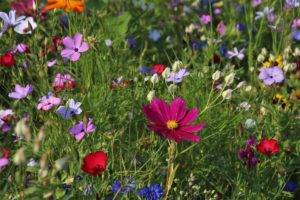Your yard and garden are your pride and joy, the setting for everything from parties to relaxing days outdoors. You’ve designed your landscape to fit your unique style and color pallet to accent your home and create the outdoor living space you’re proud to share with your friends and neighbors. Anyone who has even a slightly-green thumb knows the time and dedication it takes to create and maintain a beautiful yard, but there may be a simpler way to keep your garden vibrant that saves you time and money. Interested?
Sustainable landscaping is any landscape design that was created with local vegetation and wildlife, water conservation and decreased uses of chemicals in mind. It means that the sustainable landscape is more-easily managed than others and is safe for local waterways and wildlife. The following tips will help you create a sustainable environment in your yard that will stay beautiful for years to come.
Water Conservation and Harvesting

One of the most challenging aspects of creating a sustainable landscape in your yard is water conservation. After all, you can’t control the weather, right? Droughts happen, as do ground-pounding showers, and your plants and grass feel the effect of both. However, there is a system that can be implemented in any yard or garden that will reduce stormwater runoff and improve water filtration into the ground, reducing topsoil loss and water runoff while improving irrigation to your greenery.
A walkway or patio built with permeable pavers allows excessive storm water* to flow through joints in the pavers and into a system beneath the ground surface that re-routes water flow. Turn your permeable walkway or patio into a water harvesting system as noted on EP Henry’s ECO Center website, and use the stored water for non-potable purposes like watering your garden or washing your car.
Take Care When Selecting Plants, Trees and Shrubs

As we noted in the beginning of this article, your landscape is an extension of your personal taste and style. That said, for a truly sustainable yard, you need to reconsider what plants and trees you use around your yard to reduce maintenance time and costs as well as the chemical usage like fertilizers.
- Plant indigenous flora to reduce green waste and improve maintenance costs and effort.
- Keep plants with similar shade, soil and water needs grouped together to reduce irrigation costs, decrease chemical fertilizer use and reduce wasted water.
- Mow grass as often as needed to allow for mulched clippings to stand on existing grass as natural fertilizer.
- Use colorful perennials or regional wildflowers to reduce the need to replant each season.
- Plant trees to increase shaded areas, control house temperatures, reduce the need to water your yard and garden as often and save on energy costs.
Your yard can be a sustainable haven of beauty and enjoyment with the tips above. Take some steps this fall to prep your yard to be more sustainable next spring.